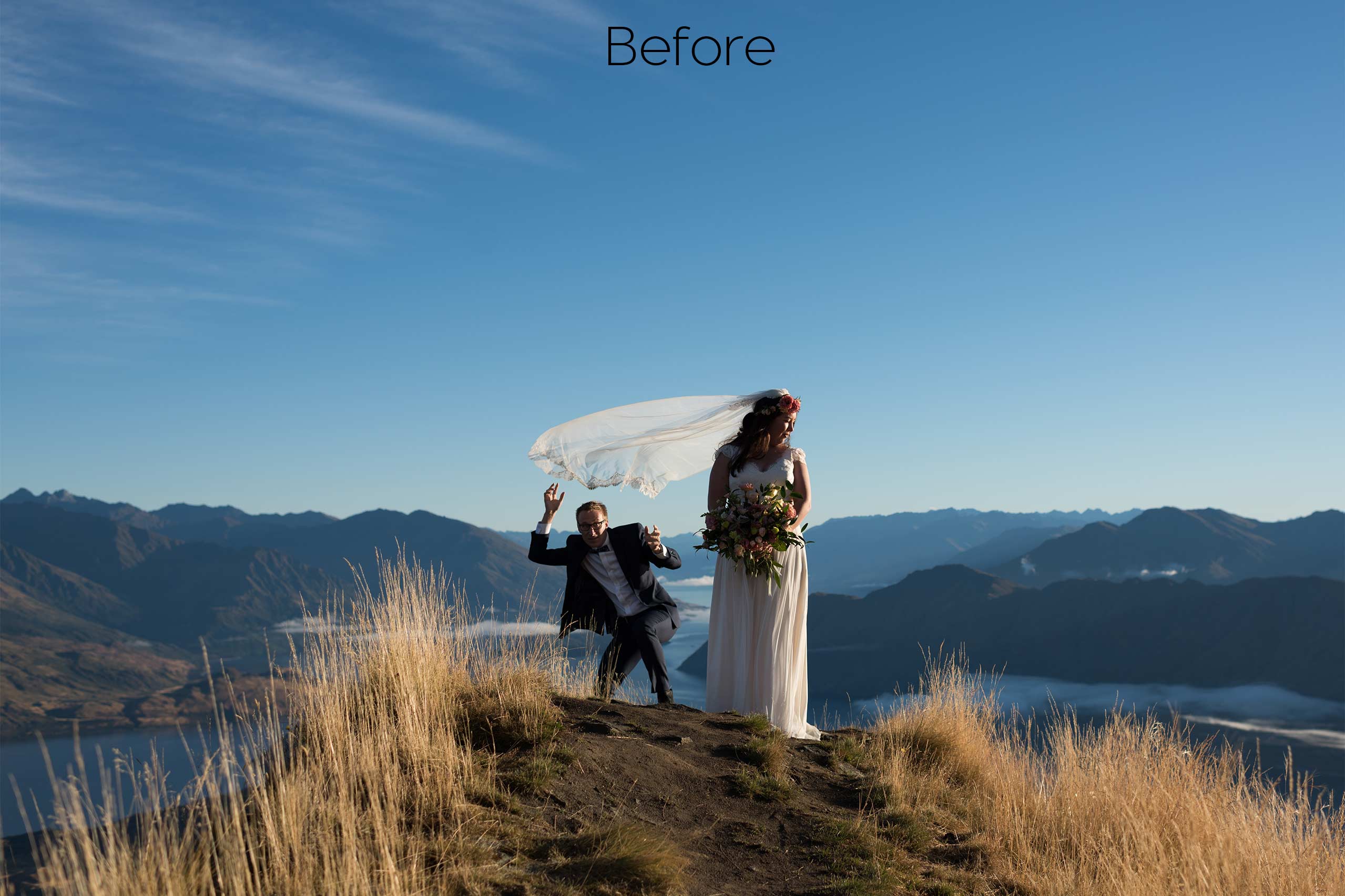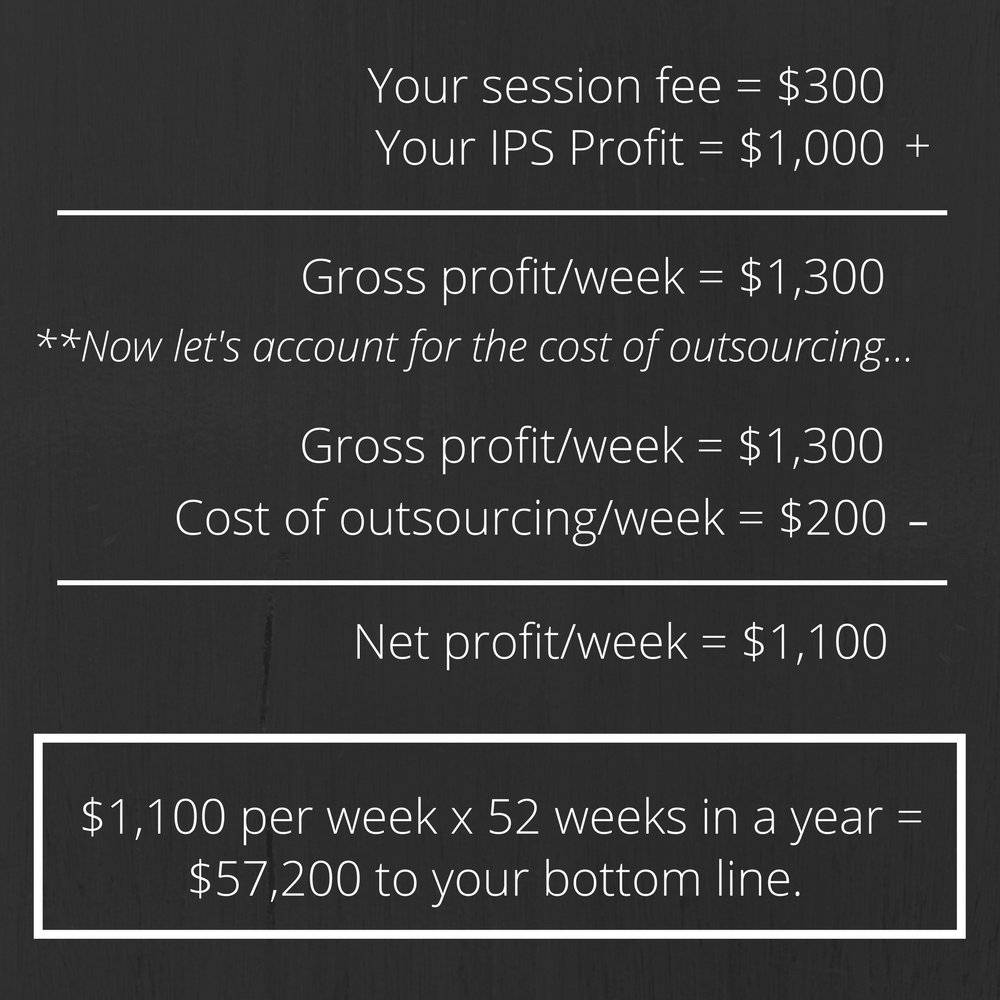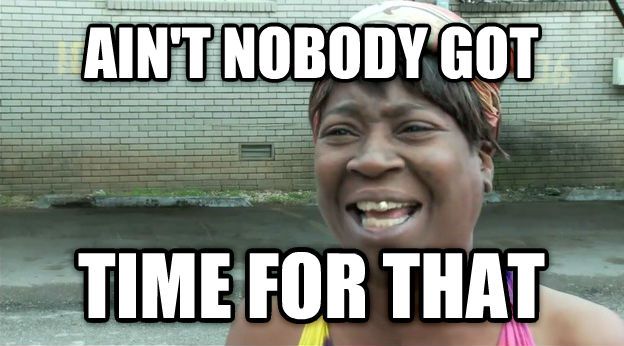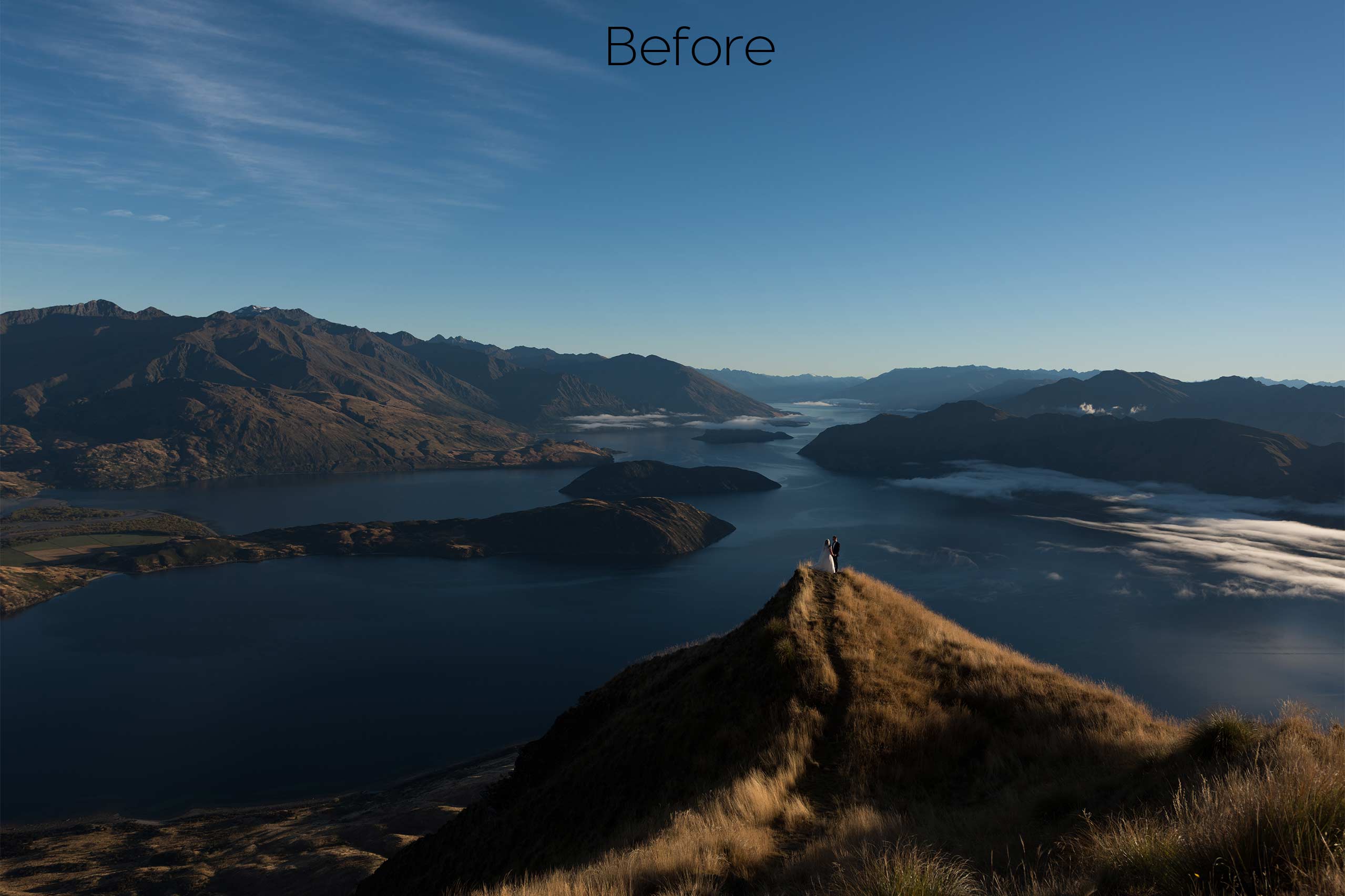So you’ve started your photography business, and everything is going swell. You’ve got clients, you’re busy, and you love being your own boss.
And this is really good, except for one problem: you find yourself scrambling to meet deadlines, you live at your computer, and your family is wondering when you’re actually going to make it to the next family dinner or if they have to book you for it (with a retainer fee, of course!).
But wait, wasn’t the point of being self employed and running your own business to have the freedom to do what you want and when you wanted to, have more time with your family and/or spouse, and, well, not be a slave to your monitor?
Hm….something went wrong there didn’t it.
But that begs the next question: how do you fix it?
The answer? Outsourcing.
Ok, I can feel a lot of you cringing right now and hovering your mouse over the tab’s ‘x’ button chanting quietly to yourself a chorus of ‘nopenopenopenope!’ because no one can ever do anything in your business like you can and they would be terrible at whatever it was you hired them to do and your quality of work would go down the drain and you’d have to close the business and you and your family would have to live on ramen noodles and eventually you’d have to move back in with your parents because you can’t afford the rent or mortgage and you’d be a disgrace and you just can’t afford anything anymore!
Ok, calm down, and breathe.
Deep breaths, and get your mouse away from the ‘x’ at the top of the screen. Bear with me here. Outsourcing is not that bad.
In fact, it’s the opposite of that. It’s actually pretty great.
Let me explain.


(This was shot by some of my favorite clients from New Zealand, Acorn Photography & Cinema, and it makes me giggle every time I see it.)
The Benefits of Outsourcing for your Photography Biz
First we’re going to start out with some math. I know, it sounds gross, especially after I just walked you through your worst business nightmare. But this is good math. This is math showing you how to make more money.
There’s lots of things you can outsource for your business, but for the sake of this example I’m going to use editing, because it’s usually something all photographers spend at least a few hours per week (or more) doing.
We’ll say 5 hours per week, average. It might be more if you shoot weddings, it might be less if you just do portraits, or more or less depending on what time of year it is, but again, this is an average.
If you outsourced your editing to someone else, that would be 5 more hours in your week you’d have to do with as you pleased.
Now let’s say that within that 5 hour period of time, you would have edited about 500 images. Since you’re outsourcing those 500 images to free up those 5 hours, that’ll cost you.
Let’s say the cost per image for basic Lightroom editing is $0.40 (this is just an average cost; different labs will charge differently). So your cost for the week is $0.40/image x 500 images = $200.
That sounds like a lot. But, where you make up that difference is what you choose to do with the extra time you’ve been given.
You can of course spend the time as free time, with friends and family (which is always priceless), or just be happy knowing that you’re not scrambling to meet your contracted deadlines all the time. Peace of mind is worth a lot too.


(These clients chose to remain anonymous, but it’s a lovely shot of a beach wedding they did.)
But here’s what happens if you invest that time in your business.
In those 5 hours per week, you could do a whole new portrait session. If your sitting fee for a portrait session is $300 (just for the sitting fee, mind you, not including any product sales), you make an extra $300/week; or, taking into account the added expense of outsourcing, you make a net of $100/week. Multiply that by 52 weeks in a year, you gross an extra $5,200 per year.
If you add in any extra you make from product sales from those sessions, your additional income just goes up from there.
Let’s do another example.
Let’s say you spend the extra time doing in-person sales sessions. You can easily make an average of $1,500 per in-person sales session, but I’m going to be more conservative and say that you do $1,000 in product sales.
That’s an extra $1,300 per week in sales, and if you take into account the cost of outsourcing per week it’s an extra $1,100/week gross. Multiply that by 52 weeks in a year, and you increase your bottom line by $57,200/year.
Here’s a visual that breaks it down:

That’s pretty substantial.
(See, I told you it was good math!)
Ok, so now we know what outsourcing can do for your business (and your sanity), let’s talk a little bit more in depth about where to start.
Getting Started With Outsourcing
If you’re not sure yet where you want to start in terms of outsourcing, there’s a few ways you can figure it out.
1. What do you hate doing the most in your business?
This will be different for everyone. For some people, it’s editing. For others, it’s retouching. Or maybe customer service and album design. Take a few moments, and ask yourself, “If I never had to do ______ again in my business, I’d be pretty happy.”
If that doesn’t bring something to mind, think instead of….
2. What do you need help doing?
Do you feel your customer service skills aren’t as good as they should be, or don’t think you’re very good at retouching? What is the one thing you feel like you’re constantly running behind on (or rather, what do you think you’re spending too much time on that’s making it so you’re always running behind)?
These are some things to help get your brain working on what you could possibly off-load to someone else.
3. What takes you the most time?
The reason that editing is something that many photographers outsource is because it’s such a time suck! Photographers spend multiple hours per week editing, and that time adds up fast.
Most editors can edit way faster than the average photographer. I personally edit at a rate of about 100 images per half an hour for basic Lightroom editing.
So what takes you 2 hours to do may take them 30 minutes or less. As such, it makes more sense to have someone who is more efficient at a task perform the task instead of you.
(This is also why I personally hired an accountant to do my taxes because if I did them myself, it would take me for-god-damn-ever to figure that shit out.)

Now that you have your list of tasks, add up the amount of time it takes you on an average week to perform these tasks. Be mindful of the seasonality as well; if your workload is heavier during some times of the year than other times, make sure to account for that.
Now that you know what you want to outsource and approximately how many hours you’d be hiring someone per week, it’s time to start looking for someone!
How Do You Find Someone?
There’s tons of ways to find someone to do what you need doing, believe it or not. But somewhere to start is by asking yourself if you need someone local to help you out or if it would be ok to have someone help you out virtually. As expected, each option comes with its own pros and cons.
Local Help
The benefits for having someone local would be that you get to meet with them face to face on a regular basis.
If you want to outsource your editing, it’s also convenient because you could have them edit on the same monitor and computer you do, that way you know you’re both looking at the same monitor white balance and exposure.
It’s also possible that some of the tasks you listed in the previous section are things that can only be done on-location at your studio, such as packing albums and client products, cleaning a studio (if you have one), etc.
(Be mindful though – there may be insurance regulations that require you to have certain types of insurance if you’re having someone come to your property to work.)
If that’s the case, you’ll want to turn to local job boards to post about what sort of tasks you need doing.
If you live in a college town, it’s very possible you could find a local photography major that would be perfect for the job (though keep in mind with hiring college students, you’ll probably have a pretty quick turnover as they move through school, graduate, and move away. Not impossible to work with, just that you’d have to train in someone again probably within a few years’ time).


(This is an image I edited for a client of mine. The before and after isn’t very dramatic, but I think it’s hilarious. The client also chose to remain anonymous, so that’s why there’s no image credit.)
There might be local job boards on Facebook, and it’s even worth advertising on Craigslist. I myself have had good luck with job searches on Craigslist, and know other photographers who have as well.
There may even be an online local job board or college job board to try as well; I know both the college in my town as well as the city and area as a whole both have online job boards you can post to.
Do you have photographer friends in town? Ask around and see if any of them have hired before and get some insight as to how they did it, where they found someone, etc.
There’s also other options like Indeed.com and larger online job boards as well that can have a pretty good success rate. Keep in mind though, sometimes you will have to pay to use them.


(My client Jolene Dombrowski Boudoir took this shot, and this was a moodier edit I did for her.)
Virtual Help
This could be a good option if all the work you need doing could be done virtually (which usually translates to, 100% on a computer).
Or if you don’t have a studio you can have someone work at and wouldn’t want them coming in to your home for personal or insurance/liability reasons.
Finding virtual help can be a little bit more difficult because it opens the options of potential hires to literally the entire planet.
So where do you start?
Well, first, look back at the list you made. Look for a lab or post-production company that suits all of your needs and can perform all of the tasks you want doing.
There are lots of companies out there that do things like editing, album design, and image retouching all at the same company.
And it can be convenient to have all of your images handled at the same location; that’s less emailing images back and forth between companies and playing the middle man.
Sometimes though, it can’t be helped. Like for example, if you need a company that does film processing and film matching between digital images and film scans, you may not be able to find a company that also does album design too.

(My client in Paris, Stacy of L’Amour de Paris took this shot in, well, Paris. I love the framing of the pillars and the door.)
So where do you find these labs?
Word Of Mouth. First, ask for a recommendation from other photographers you know who outsource everything virtually. Just like your own clients and marketing, word-of-mouth referrals are still some of the best and most reliable you can get.
Facebook. You can also try asking in photography Facebook groups too. It’s actually a topic I see come up quite regularly, and many photographers usually chime in with their referrals and why they like that particular company.
Google. And of course, there’s always Google. You’ll want to try phrases like “Photography Outsourcing” or “Photography Editing” or “Photography Album Design.” That should bring up a plethora of companies to review and choose from.
Outsourcing Things Besides Editing and Post-Production
If you need help with other jobs that don’t have anything to do with editing or albums (like maybe blogging, social media, customer support, regular newsletters, etc.), there are still places out there.
You may even be able to broaden your search and find a Virtual Assistant that can fulfill some of these duties for you. If it’s not photography-specific duties [like editing], you will probably have a bigger pool of options to pull from.
I would recommend seeking out people like this the same way you would find an editing company – word-of-mouth, Facebook, and Google.
Try searches like “Customer Service Virtual Assistant” or even just “Virtual Assistant” and you should have more than enough options to sift through.


(This image is from one of my photographers in Hawaii, Andy Stenz. It’s really unfair editing images from Hawaii in the middle of a Wisconsin winter, but whaddayado.)
There are some people in the virtual assistant world that specialize in photography virtual assistantship (meaning they might do things like customer service, editing, blogging, retouching, etc.).
I personally offer a variety of services on top of just editing, such as blogging and SEO, newsletter services, and even Facebook advertising.
Not all labs are like this though; many labs offer just simply editing and post-production services. Similarly, most virtual assistants or companies only offer non-photography related services.
If you’re cool using a couple different companies to perform different takes, awesome! If you find it more convenient to have all of your services handled under one roof, you may have to do a bit of digging.
Employee vs. Independent Contractor?
This will really depend on how much work you have to outsource and how regular the hours will be. There are a lot of legalities that correspond with each type of relationship, and I’m not going to get into them here.
(Though if you’re only outsourcing a few hours here and there, it would probably be easiest to find an Independent Contractor or company to take care of your needs.)
You can, however, find a little bit more information about the difference between the two here.


(The client who shot this also chooses to remain anonymous. Myself and my editors do on average 3-5 newborn sessions a week.)
Preparing to Outsource
So you’ve decided you want to outsource, you know that you want either a virtual or local assistant, and maybe you’ve found them at this point.
How do you go about starting the process?
Systems. Systems and documentation.
How do you edit an image? How do you approach it? Exposure first, then highlights, then temp? Something else? Do you like your images warmer or cooler, brighter or darker, etc.?
Take a critical look at how you produce your work, and write them down. Put together a sample selection of images that you feel epitomize your editing and photography style.
Or, better yet, make a video of yourself editing your images. Talk through the edits you’re making and why you’re making them.
If you use Lightroom, send your editor a Lightroom catalogue with some of the images already edited so they can see and walk through your editing process, and match similar images to them.
If you’re looking at outsourcing other things like customer service or something, write down your processes. What times do you generally check your email/how soon do clients usually wait to get a response from you?
Do you have any canned responses you use regularly? If so, when do you use them?
Maybe you’re outsourcing your blogging. How do you normally insert images into your blog? Are they individual images or diptychs? How do you do your SEO? Do you put captions on your images?
By this time, you get the point of what I’m trying to say. Think about what you’re trying to outsource, and write down and document your system for how you do it.
This can be something you give the person that you outsource to to help them as they get started or serve as a reference document later on if they have questions.

(This is an album spread I designed for a client of mine, who chooses to remain anonymous. I did the editing for this wedding too.)
When To Start Outsourcing
At this point you may have decided that you want to start outsourcing. Cool! You’ll totally love it.
If you haven’t, you might be wondering when the best time is to start.
The answer: before you need it.
If you’re starting to get busy enough where you feel like you’re almost in a deadline crunch, it’s probably time. Or if you’re always pushing back or going over your deadlines, that’s another good sign.
Or it could be time to start looking into outsourcing because it’s taking you longer to do something than you think it should.
How quick do you edit your images? Is it taking you an entire day to edit a 500-image wedding? Most good photography editors can do that many images in 2.5-5 hours (averaging about 100-200 images per hour).
What about email? Do you feel like you’re spending hours on customer service emails per day? That could be another sign it’s time to find help with your customer service and support.
If you’re still not sure, do it this way.
Sit down with your calendar, and average out how many sessions and/or weddings you do every month and every week.
Block off the time for each of those sessions. Then, block off the time necessary to process the images from the session – everything from culling to retouching and ordering and packaging the final products.
Next, block off the time you spend each day on in-personal sales sessions (if you do them). Then, email/phone time.
And be honest with yourself – you may only spend half an hour in the morning on email, for example, but if it takes you an hour to get it done because you spent time on Facebook in between, then it takes you an hour to do email in the morning.
Don’t forget about the time it takes to process orders and prints through your printer, do album design, and package and/or ship your products, and any other necessary functions for your business.
And don’t forget personal time either! Your family and friends want to see you sometime before next year.
If you find yourself running out of time in the day for all these things, it’s probably time to look at outsourcing some part of your process.
Go back up to the beginning of the article and work through it again, this time thinking about the areas of your business you could potentially outsource.


(This is another one from Acorn Photography & Cinema, showcasing the beautiful Middle Earth landscape of New Zealand.)
Helpful Tools For When You’re Ready
Over the years, I’ve picked up on a few tools that really make outsourcing easier. Here’s a list of some of my favs:
- Dropbox. Great for transferring files. If you don’t have it already, it acts like a folder on your computer that you can drag and drop files into and out of. If you share the folder with someone (like your assistant), they can drag and drop files into and out of the same folder. As soon as it uploads, it’s available to the other person.
- Asana. This is a free project organization website that allows you to create projects, assign tasks to people, set reminders, etc. It even has a mobile app for you to organize on-the-go.
- Help Scout. Really great for having someone help you with email support. You can create canned responses and workflows that automatically organize or categorize the emails you receive based on who sent them, their subject title, or both. You can also have multiple users on the same account, so you can create a login for your VA.
- Smart Previews. If you’re outsourcing your editing (and the lab you’re using accepts it), Smart Previews and Lightroom are the way to go. I won’t delve too much into what Smart Previews are, but the benefits of using them is that you can send an entire wedding to someone to edit in just a few gigs. It’ll upload much faster to places like Dropbox, and it won’t take up as much space on your computer when it does.
- Smart Albums. Smart Albums create album page designs based on the images you choose for every page. No more creating the image layouts by hand in InDesign or Photoshop; the program does all that for you. (I won’t get into too many details here, but you can check out their website here to see how it works.)
Now It’s Your Turn.
There’s a lot of things to consider in this post, but I challenge you to go through everything you see here and actually do your homework: write down the parts of your business you feel you struggle with, write down the parts of your business you’d be happy if you never had to do again, and then using that information to determine if you need virtual help or in-person help.
From there, start exploring methods for finding the right person. And so on.
Don’t be afraid to network and talk with other photographers in your area and your network; they may not only know of some resources you’re not aware of yet, but may even have direct referrals for someone who can help you with whatever you want to outsource.
Are You Ready To Get Started?
Great! I’d encourage you to get in touch with me.
Even if we’re not a good fit, there is a good chance I’ll know someone else that can.
I recommend out to other labs all the time, and I’m happy to do it; not only because I’ve formed relationships with some of the other labs, but also because I’m just glad photographers are taking control of their business instead of letting their business take control of them.
Click here to get in touch with me now and see if we’d be a good fit.

(This is me. My friend Tim King took this photo at a conference I spoke at. I brought my unicorn onesie, so we obviously had to take pictures. Obviously.)
